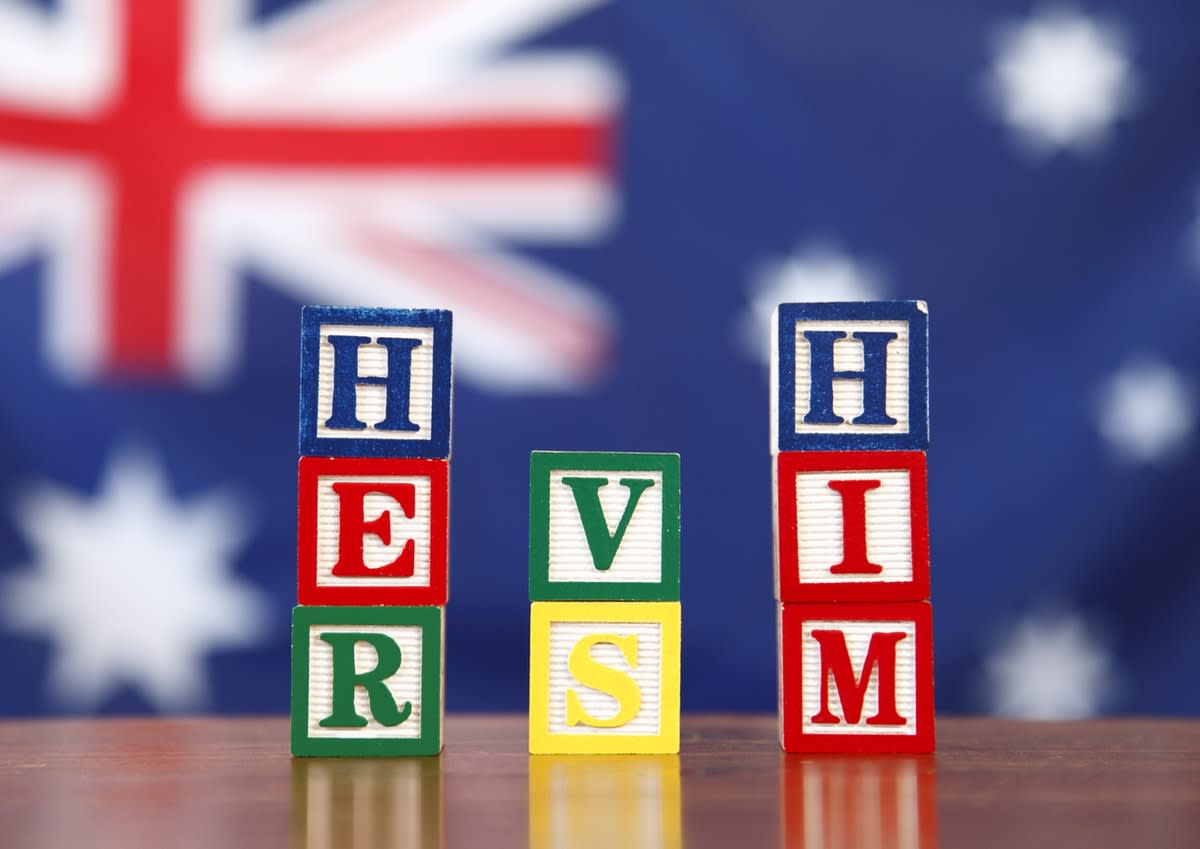Brittany Higgins, the young woman staffer who alleges she was raped in Parliament House before the 2019 election, has made a huge impact on Australian politics.
Zareh Ghazarian
Senior lecturer, School of Social Sciences
Katrina Lee-Koo
Associate Professor of International Relations, School of Social Sciences
The 26-year-old’s story, the inadequate response of her boss, former defence minister Linda Reynolds (who was heard to call Higgins a “lying cow”, and has since been demoted), and the question of whether Prime Minister Scott Morrison knew about the rape – he says he was not told – have taken a toll on the Coalition’s electoral support.
At the same time, claims of a toxic workplace, bullying, and sexist attitudes in the national Parliament have brought the institutions and culture of Australian politics into sharp focus.
Gender Politics – Navigating Political Leadership in Australia, a collection of essays edited by political scientists Zareh Ghazarian and Katrina Lee-Koo, was conceived before these events became public. But the book does describe a political arena in which the structural and cultural barriers facing women are contradictory and self-defeating.
“We foresaw the need for a national conversation around the issue of gender and political leadership, and the experiences, particularly of women, in Parliament House,” Associate Professor Lee-Koo says.
“When they’re in the public domain, often those conversations are not very smart. They’re based on stereotypes, on he said/she said, and there’s not a lot of evidence and strong critical reflection.”
The book was conceived after the 2019 election, and the leadership spill in which then deputy leader and veteran foreign affairs minister Julie Bishop received only 11 votes – despite being more electorally popular than the other two Liberal Party contenders, Peter Dutton and Scott Morrison.
Bishop retreated to the back bench, and resigned from her portfolio at the election.
The book also examines the experience of Australia’s first female prime minister, Julia Gillard, who, when she left office, said of the role gender had played in her treatment by the media and in Parliament:
“It doesn’t explain everything. It doesn’t explain nothing. It explains some things, and it is for the nation to think in a sophisticated way about those shades of grey.”
The ‘double bind’ for female politicians
The essays, by political scientists, journalists and academics, are an attempt to do that.
A theme running through the collection is the double bind confronting female politicians in Australia. The foreword, written by Sharman Stone, a former Liberal parliamentarian, defines it this way:
“A woman who aspires to political leadership must be deft, retaining some non-threatening feminine attributes for some purposes, while demonstrating male virtues in the party room and on the chamber floor.
“She should not shed tears, except at a time of extreme (and therefore rare) national or personal tragedy. She should give as good as she gets when abused in parliamentary debate, as former prime minister Julia Gillard understood.
“She should convincingly perform her domination of her party colleagues and demonstrate her ability to humiliate the opposition in the media every day …
“She knows the costs of calling out misogynist behaviour, inequitable work-life balance and time wasted on dysfunctional parliamentary processes. She is aware that embracing victimhood is disempowering and inviting contempt.
“She is regularly reminded in the party room that ‘disunity is death’, and playing in the team is all.”
When Gillard finally responded to then Opposition leader Tony Abbott in her widely circulated misogyny speech (“I will not be lectured about sexism and misogyny by this man. I will not … Not now, not ever”), deputy Opposition leader Julie Bishop, sitting on the opposite side of the chamber, accused the then PM of cynically playing the “gender card”.
“She was a woman who became the Prime Minister of Australia. She was no shrinking violet. She was no victim of a glass ceiling. She reached the highest position in public life, and she was complaining about sexism,” Bishop said.
While in office, Bishop did not call herself a feminist. She opposed the idea of quotas for women in parliament – supporting her party’s line that women were able to rise through the Coalition’s ranks on merit, as she herself had done. (Labor, by contrast, adopted quotas, and is on track to reach 50% female representation in federal Parliament by 2025.)
But by the end of her political career, Bishop changed her messaging, suggesting that if women were equally represented, then much of the sexism women endured in federal politics would end.
Feminists in all but name?
In her essay on the former foreign minister, Associate Professor Lee-Koo points out other contradictions. Bishop’s foreign aid budget deliberately and consistently funded programs empowering women – although no public attention was drawn to this.
(In his essay on Peta Credlin, former PM Tony Abbott’s chief of staff, Emeritus Professor James Walter says Credlin promoted experienced women staffers while she held the office. Yet Credlin, who’s now a right-wing political commentator, is also not widely recognised as a supporter of other women.)
“I never believe that strong, ambitious, capable women are not feminists,” Associate Professor Lee-Koo says. “Why would a woman not, at some level, believe in a philosophy that’s about their equal rights?
“I think Julie Bishop understood that it was politically unacceptable for her to declare herself a feminist, but nonetheless believes in gender equality and believes in promoting the rights of women. Whether she does it in the same way as other feminists is a matter for debate.”
Her essay argues that Bishop’s reluctance while in Parliament to acknowledge openly the cultural and structural barriers facing women politicians contributed to her final failure in the party room.
Her “team player” strategy took her far, but did not allow her to claim the top prize. The difficulty of rising in her party while acknowledging the barriers she faced was her double bind.

Gillard’s dilemma
Julia Gillard was a different case. She was a popular Labor politician until she challenged PM Kevin Rudd, to whom she served as a deputy. She won the challenge, but was ever after seen to have “blood on her hands” – a slur that generally doesn’t apply to male politicians who can be admired for playing a hard game, Dr Ghazarian says. (He gives the example of Paul Keating’s challenge and defeat of Bob Hawke.)
“She was in a minority government, and that stifled her,” he says. “She had to deal with the crossbenchers, with the Greens. In terms of legislative performance it was a really strong government, but her personal performance started to become wooden. The idea that she was an approachable, dynamic person started to evaporate … It unravelled for her very quickly.”
As PM, Gillard was constantly accused of lying, of being untrustworthy. For good measure her dress sense was criticised, too – even by Germaine Greer.
“What should she have done? Her attitude at the time was to knuckle down and … ignore it, it’ll go away, get on with the job, and that’ll speak for itself,” Associate Professor Lee Koo says.
Except it didn’t.
Gillard’s concern was that if she called attention to the extreme sexism she faced, “she would either be represented as someone who couldn’t take it, who couldn’t handle a joke”, Associate Professor Lee-Koo says. “Or that the issue itself – as happened with the misogyny speech – would take all the oxygen and detract away from the issues and policies that she was trying to get through.
“I think now she’s reflecting that maybe that was the wrong strategy. The right strategy should have been to call it out sooner, to call it out often, and to have kept calling it out as it happened.
“Now, there’s no guarantee that that would have worked. It could have absolutely blown up in their faces. This was the bind that they were in.”
The Ardern approach
Meanwhile, in New Zealand, Prime Minister Jacinda Ardern has had a daughter while in office, and was voted back with a resounding majority while showing the traditional female virtues of compassion and kindness. She’s navigated formidable challenges with great skill – the shootings of Muslims in Christchurch, an earthquake in Wellington, and the coronavirus pandemic.
Ardern’s “inclusivity, her broad approachability … really just boosted her support”, Dr Ghazarian says. “Voters felt that her approach was very useful and worthwhile to have.”
He believes Australian political parties and leaders can learn from Ardern’s example that her approach to leadership “is not just effective, but actually a vote-winner”.
But Associate Professor Lee-Koo isn’t so sure that the New Zealand Labour leader would survive the more brutal political conditions she would have to face in Australia.
“I think we would need to see a significant shift in the culture before a leader like that would be acceptable – not just to the broad electorate, but to their party and within Parliament,” she says. “I think Australia’s a long way from that sort of more compassionate, inclusive approach … whether it comes in the form of a man or a woman.”








